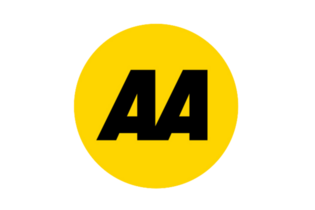Car insurance: What it covers and how to claim
Everything you need to know about insuring your car.
- On this page
- Types of car insurance cover
- What’s the difference between a market and agreed valued car?
- Tips for making a claim on car insurance
- Make sure your insurance will cover any outstanding finance on the car if it’s written off
- If you pay your premium monthly
- You'll have to pay an excess when you claim
- Is my car covered for a natural disaster?
From buying the right cover for your car to making a claim, we’ve got you covered.

Types of car insurance cover
Comprehensive policies cover your car if it’s damaged or stolen as well as the damage you cause to someone else’s car or property. They also offer extra benefits. For instance, they’ll cover the cost of towing your car to the nearest repairer or safe location following an accident and cover the reasonable costs to transport you home.
Third-party only policies cover you if you damage someone else’s car or property. They’re not designed to cover damage to your vehicle. That said, most policies offer a limited payout if an uninsured driver crashes into you and you’re able to supply their registration and contact details.
Based on our annual premium survey, a third-party only policy for an individual is about three to four times cheaper than a comprehensive policy.
Third-party fire and theft policies provide the benefits of third-party only policies plus they cover you if your car is stolen or damaged by fire. As this level of cover provides some protection for your car, you may get access to benefits not offered to third-party only policyholders (for instance, limited cover for contents in your car if you hold a fire and theft policy, but nothing if you hold a third-party policy).
What’s the difference between a market and agreed valued car?
Market value policies cover the cost of your car immediately before the damage occurred. The payout is based on the amount a similar car would fetch on the retail market as determined by your insurer.
With agreed value policies, you and your insurer agree on your car’s value. Your insurer will pay the agreed amount if your car is written off provided you’ve met the policy’s terms and conditions. As your car’s value decreases with age, you should revise the agreed amount whenever your policy is renewed. Agreed value policies give you greater certainty about the amount you’ll receive if your vehicle is written off.
If you are a consumer member, you can compare insurers premium prices. Our car insurance survey and buying guide is available to everyone.
Tips for making a claim on car insurance
- For a big accident, it’s likely emergency services will be involved. If so, get a copy of the incident number so your insurer can follow it up.
- For minor accidents, take the name, phone number, address and registration, and the name of their insurer. It’s also helpful to take some photographs of the scene and damage to vehicles.
- If you can’t move the car after an accident, you may have to have it towed to a secure location. Depending on your level of cover, the insurer may cover this cost.
- You’ll need a Police report number if your car has been stolen.
- If you’ve had items stolen from your car, it may be covered by your contents insurance policy.
- Any repairs will need approval from the insurer before they get done.
Most insurers will direct you to a preferred repair service, however
you can choose a repairer of your choice.

Car repair complaints templates
If your car develops a defect, use these templates as a guide to put your complaint in writing.
Make sure your insurance will cover any outstanding finance on the car if it’s written off
If finances are tight, don’t be tempted to cancel your car insurance. If the car is written off, you’ll still have to keep paying the finance on it.
If you’re insured for $10,000 but you’re still paying $15,000 on finance when the car is written-off, you’ll still have to keep paying the finance. Paying a slightly higher car insurance premium to cover the whole cost of car is a safer financial bet.
If you pay your premium monthly
If your car is a write-off, and you’re paying your insurance monthly (rather than in a lump sum annually) it’s likely your insurer will deduct the outstanding premium off any payout.
You'll have to pay an excess when you claim
- If you need to make a claim, it’s likely you’ll have to contribute the first few hundred dollars towards your car’s repair or replacement. This is called the excess.
- Most policies come with a standard excess. Generally, insurers allow you to choose a higher excess in exchange for lower premiums or vice versa.
- Younger drivers – or those on a restricted or learner’s licence – usually get stung with a higher excess. This can be as much as $1600 for a driver under the age of 21 with a learner’s licence.
Is my car covered for a natural disaster?
Generally, comprehensive car insurance policies will have some provision for natural disasters. Check your policy to make sure.
We've tested 9 car insurance.
Find the right one for you.






Member comments
Get access to comment